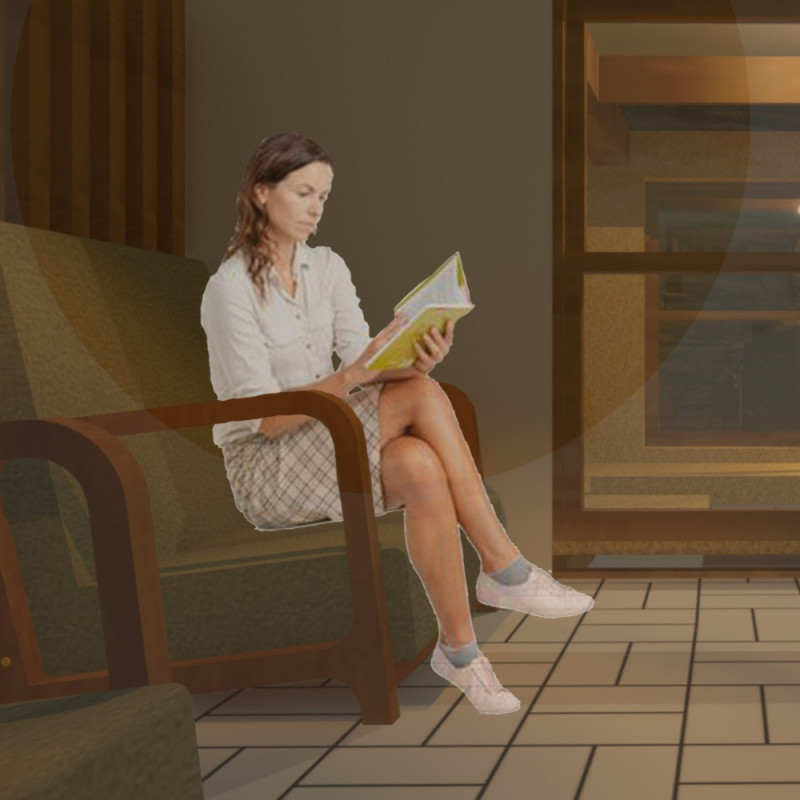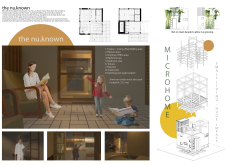5 key facts about this project
The layout includes distinct functional areas: an entrance, living space, kitchen, dining/office zone, bedroom, bathroom, terrace, and a deposit area, all flowing into one another to promote versatility. The integration of green pots and a rainwater collection system further reinforces its commitment to sustainability.
Sustainable Material Usage and Unique Design Features
The nu.known microhome stands out due to its thoughtful selection of materials and innovative design features. It employs American cedar wood as the primary structural element, chosen for its durability and sustainability. The project also incorporates recycled materials from the construction site, minimizing waste and reducing the environmental footprint.
One notable design element is the vertical net incorporated into the facade, allowing for ivy growth. This not only provides an aesthetically pleasing green feature but also enhances air quality and insulation within the microhome. The extensive use of glass in windows facilitates natural light and ventilation, reducing the need for artificial lighting and climate control systems.
Additionally, the design allows for flexible use of space, accommodating a variety of lifestyles and family dynamics without compromising comfort. This adaptability of the layout is crucial, as it promotes functionality while maintaining a sense of openness.
Exploring Architectural Design and Functionality
The architectural design of the nu.known microhome is distinguished by its emphasis on harmony with nature and functional adaptability. The combination of efficient spatial configuration, sustainable materials, and unique design elements creates a living environment that supports the well-being of its inhabitants. The open-plan living areas are designed to foster interactions among occupants while providing distinct zones for individual activities.
The integration of modern amenities within a small area exemplifies the project's commitment to enhancing quality of life while minimizing ecological impact. The design not only addresses the immediate needs of residents but also aligns with broader considerations of environmental sustainability and resource conservation.
For further insights into the architectural plans, sections, and design details of the nu.known microhome, interested readers are encouraged to explore the full project presentation. This comprehensive overview will provide a deeper understanding of its architectural ideas and innovative approaches to modern living.























